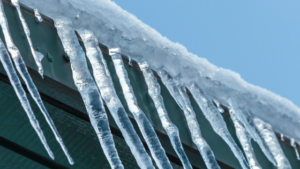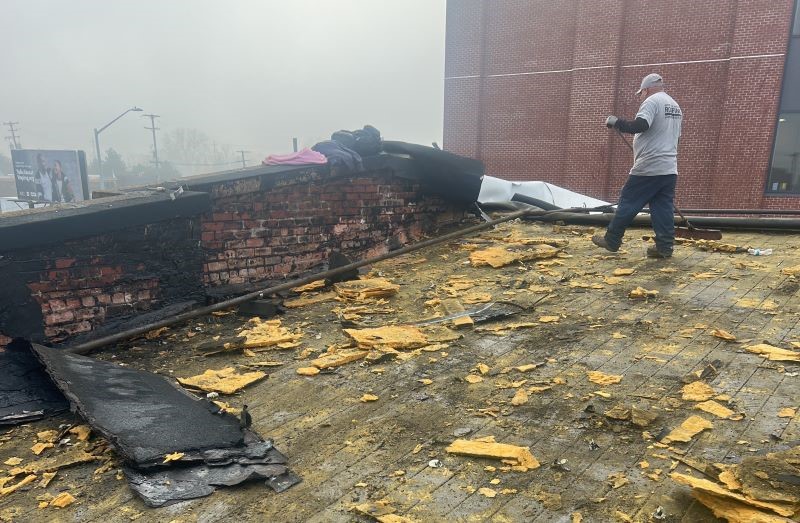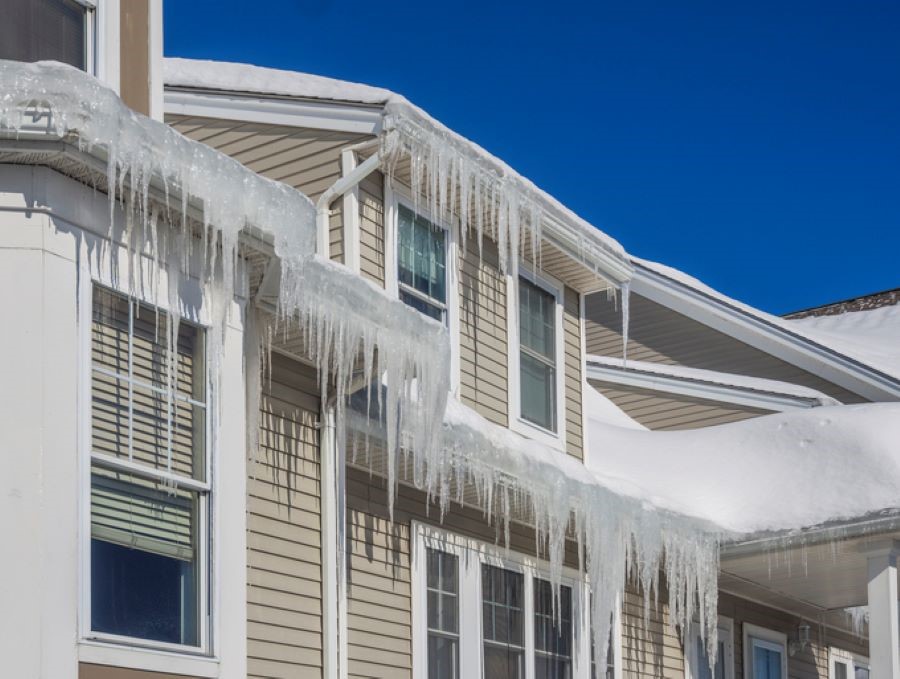 During the winter months in West Michigan, you’ll see icicles hanging on roofs, eaves, and gutters. No roof is immune. To many, this is a beautiful sight, but it is also a sign of potential hazards.
During the winter months in West Michigan, you’ll see icicles hanging on roofs, eaves, and gutters. No roof is immune. To many, this is a beautiful sight, but it is also a sign of potential hazards.
Aesthetic appeal is nice, but can’t be prioritized over safety. Small icicles typically shouldn’t cause you any concern, but when you start to see diameters of two or more inches, you may have bigger problems, such as ice dams.
What Causes Icicles to Form on a Roof?
Icicles are formed when rooftop snow melts, then refreezes as it attempts to flow off the roof. Small icicles are a normal part of life as a homeowner in West Michigan, so you don’t necessarily need to be worried, but you do need to pay attention and make sure no larger problems may be present.
If you notice icicles forming on gutters, you should take a closer look. These could be signs of ice dams, which are indicative of bigger problems with your insulation and ventilation and can lead to extensive damage if not addressed.
The insulation and ventilation in your attic, when adequate, will keep your roof cold during the winter, minimizing melted snow. However, if your insulation and ventilation are not sufficient, your roof will be unusually warm, melting snow even when the outside temperature is below freezing. When that melted snow gets to the eaves and gutters, there is no more warmth coming from underneath, so it freezes. Poor insulation and ventilation leads to more and more snow melting, which is when ice dams can form.
Icicles on Gutters
Gutters themselves don’t cause icicles or ice dams, but when you have insulation problems, gutters become ideal troughs in which water can collect and freeze. When this happens, icicles often hang over the gutters, and you can see them connected to the large ice buildup in the troughs. This can be dangerous for several reasons, as the added weight stored in the gutters can cause them to bend or even rip away from the house.
If you see any evidence of water building up and freezing in your gutters, you’ll want to address the issue sooner than later.
How To Prevent Icicles on Your Roof
Proactive snow removal is the best way to prevent problems. Use a roof rake so you can remove snow from your roof while you remain on the ground. (Climbing onto a slippery, angled surface like a roof is not a safe idea.) If there’s no snow buildup on the edge of your roof, there is no snow that catch and refreeze water, and therefore no icicles or ice dams that can form.
In addition, you should have an insulation professional make sure you have proper insulation and ventilation in your attic. If you do, you’re at a low risk for ice dams, and rooftop snow removal is less essential, albeit still recommended.
Will Icicles Damage My Roof?
Icicles themselves usually don’t cause damage. This is why you can leave the small ones alone. It’s only when symptomatic of a bigger problem, like an ice dam, that you need to worry about roof damage.
If you have large icicles, either in length or diameter, you should be concerned, as those are signs of an ice dam. Also, if you notice icicles on siding, you should call a professional right away, as that generally means water has melted inside your home’s wall.
Should I Remove Icicles From My House’s Eaves?
Again, small icicles are probably safe and don’t need to be removed. However, if they’re large or if you simply don’t want them there, here are some safe ways to get them off your roof:
- Saw. Use a hacksaw and cut into the ice as if it were a piece of wood.
- Hack. Use a hammer or chisel and hit the base – avoid hitting roofing materials.
- Melt. Use a safe ice-melting tablet. Avoid calcium chloride, as it may stain your roof.
With any of these methods, take great care toward safety. Don’t go up on the roof; it’s slippery enough when you’re not trying to saw or hack. Make sure no one is standing below.
If you notice an ice dam while you remove icicles from your home, it’s best to call a professional.
Most icicles are harmless, but by paying attention to them and ensuring proper insulation and ventilation, then proactively managing any accumulated snow on your roof, you can get through another winter without having to deal with the messy, expensive problems that can arise when ice dams go untreated.
If you need help removing snow or ice from your roof, or would like your insulation and ventilation inspected, give us a call. We're happy to help!
Subscribe to West Michigan Roofing's Blog





Comments